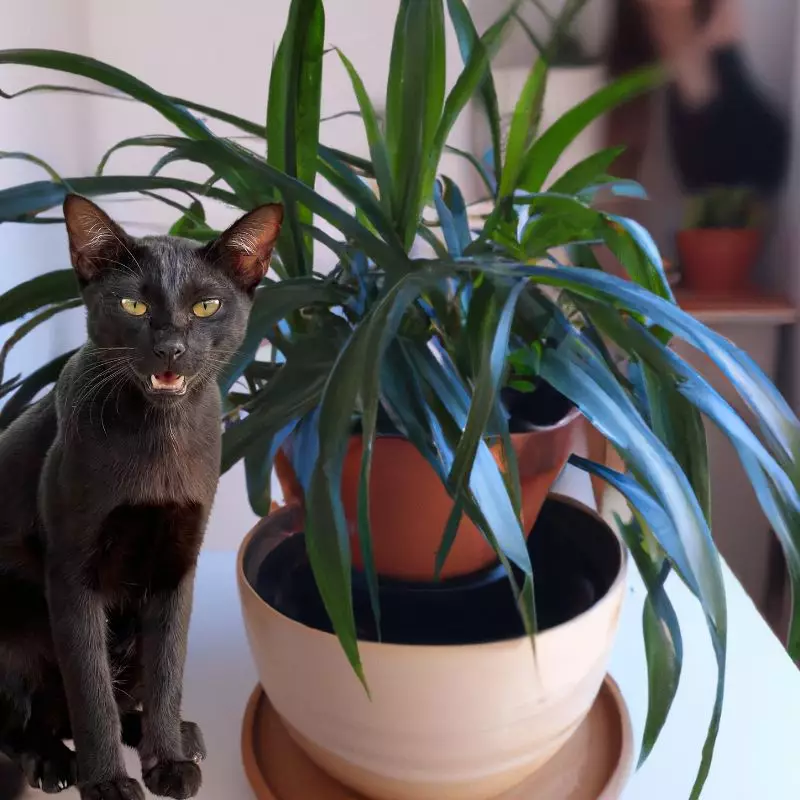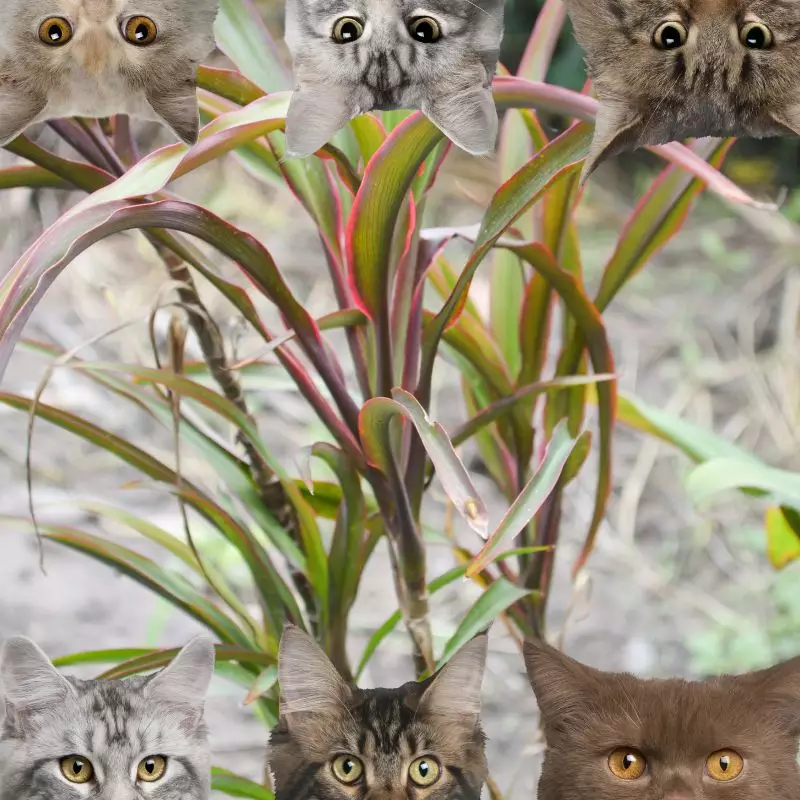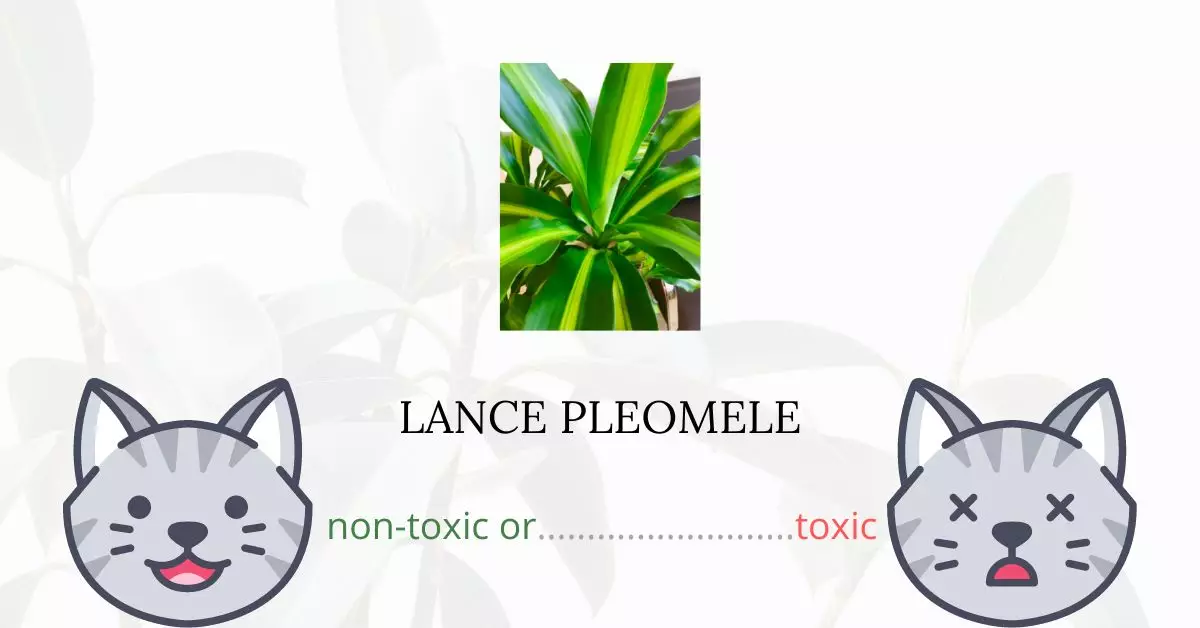Lance Pleomele is not toxic to cats. If you have this plant in your home, you can be assured that it poses no direct poisoning risk to your feline companions.
This article is the result of a collaboration with a team of experienced DVMs (doctors of veterinary medicine). Through their expert contributions and our extensive research from high-authority sources such as ASPCA and PetMD, we strive to provide accurate and up-to-date information regarding the potential risks of various plants, focusing here on Lance Pleomele, and their effects on cats.
It’s worth noting that while the American Society for the Prevention of Cruelty to Animals (ASPCA) classifies Lance Pleomele as a non-toxic plant for cats, dogs, and horses, this doesn’t mean your cat should frequently interact with or consume it. Keep reading to understand the potential effects of your pets coming into contact with or ingesting Lance Pleomele.
Can Cats Eat Lance Pleomele?

The Lance Pleomele will not harm cats. There are no hazardous substances that can hurt your cats in case they ate some of this plant. However, bear in mind that cats may get stomach and gastrointestinal issues if they consume too many plants. Our feline friends can only partially digest plant materials, so their bodies usually expel them through vomiting or diarrhea. The symptoms will gradually go as soon as the plant material is eliminated from their system.
What is Lance Pleomele?

Lance Pleomele (Dracaena spp.) is a genus that includes roughly 120 species of trees and succulent shrubs. Pleomele and Sansevieria, two previously recognized genera, are now a part of Dracaena. It was previously divided (sometimes with Cordyline) into the family Dracaenaceae or classified as a member of the Agavaceae in the APG IV classification system. It is currently a member of the family Asparagaceae, subfamily Nolinoideae (previously the family Ruscaceae) (now Agavoideae).
Two of the species are native to tropical Central America, but the remainder is found in Africa, southern Asia, and northern Australia. Due to their tolerance for low light and infrequent watering, many species of Dracaena are kept as houseplants.
Keeping Cats Away From Lance Pleomele

You could put it in a room that your cat cannot access easily, or that is already off-limits to them if you have one. You might try hanging it somewhere your cat can’t get to it. Make sure there aren’t any surfaces from which your cat could launch itself.
To avoid digging, you can also cover the soil around the bases of the plants with some large pebbles or stones. Cats may be deterred from the planter by placing pinecones or aluminum foil around it, for example. Using mesh, chicken wire, or some other permeable material to cover the plant’s base provides an additional choice.
Plants to Avoid For Your Cats
If you are a cat owner and unsure if the plants growing in your yard are harmful to your cats, check out this list of toxic plants for cats. You can also check our list of non-toxic plants for cats.





